Note: This story contains images and descriptions of atrocities that may be disturbing to some readers.
Like a flickering ember, the Holocaust — the effort in the 1930s and 1940s by the Nazi regime to murder all European Jewish people — is fading from living memory.
At least four survivors with roots in the Pittsburgh area have died since January. Fewer than 20 survivors remain in the region — many of them reluctant to discuss their experiences as they age, still face trauma from the past and worry about a recent surge in antisemitism.
Among those with Pittsburgh ties lost this year were Moshe Baran, who joined armed civilians in the Polish forests; Harry Drucker, who escaped imprisonment and fled into the Carpathian mountains; Sarah Weinroth, who hid in a Belgian convent among Catholic orphans; and University of Pittsburgh professor Gershon Mandelker, who hid with his father in Polish woods and haystacks.
Click images to learn more.
The memories never faded.
“You always think about [the Holocaust], dream about it,” said Drucker, a Squirrel Hill resident who died in May and left an oral history that’s available through the Holocaust Center of Pittsburgh. “Most times you can’t even believe it. Even if you live through it, you can’t believe it.”
In giving his video interview, he began to cry.
The center, founded in 1980, educates people about the Holocaust and presents speeches from survivors still living here, like Oscar Singer, 99, who was forced to work hard labor while enduring starvation and beatings; Solange Lebovitz, who posed as a Catholic farm girl; and Albert Farhy, 95, who vividly remembers his days in a Bulgarian ghetto.
At least 350 survivors lived in Pittsburgh at one time, according to the center. Many settled in Squirrel Hill, a neighborhood that by 1960 had at least a dozen synagogues, four kosher food stores, a Jewish community center, many Jewish-owned shops, Jewish schools and numerous Jewish organizations.
Their lives were woven into the new community they had found. Baran’s daughter would become head of school at Community Day School on Beechwood Boulevard. Lebovitz would start on her college degree at the University of Pittsburgh when she was 42, graduating eight years later with a double major in English and French literature. Drucker worked as a tailor in his new country, even sewing the zippers onto Fred Rogers’ knitted sweaters for the PBS children’s TV program “Mister Rogers’ Neighborhood.”
The Europe they left behind had become a graveyard. An estimated 6 million people, representing about 60% of Europe’s Jews and one-third of Jewish people worldwide, died as part of Adolf Hitler’s eradication plan.
The world Jewish population was estimated at 16.6 million to 16.7 million before World War II. As of Sept. 15, 2023, it was estimated at 15.7 million, with the majority living in Israel (7.2 million) — the world’s only Jewish country — or the United States (6.3 million), according to the Jewish Agency for Israel.
In 2015, Christianity had an estimated 2.3 billion adherents, Islam about 1.8 billion, Hinduism 1.1 billion and Buddhism 500 million, according to the Pew Research Center.
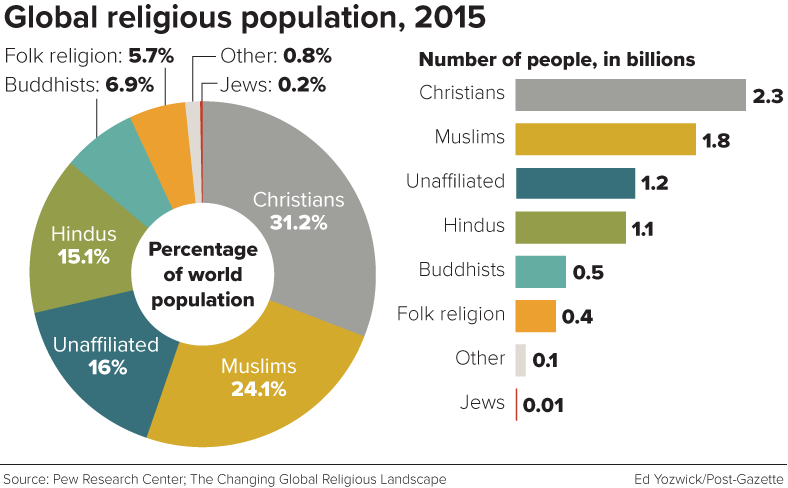
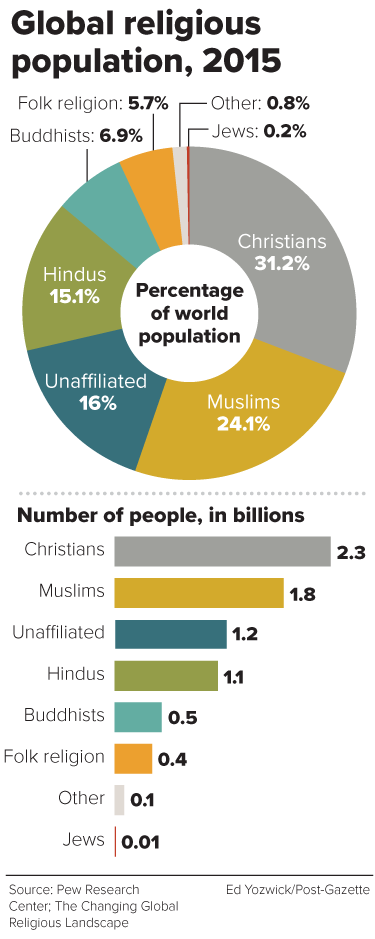
As living witnesses to the Holocaust pass away, those who still teach its history say the lessons matter. “Teaching the Holocaust … draws awareness to how fragile institutions that should protect our security can be and why we shouldn’t take them for granted,” Emily Loeb, director of programs and education at the Holocaust Center of Pittsburgh, wrote in an email.
“The Holocaust teaches about the dangers of antisemitism and hatred, why it’s important to actively counter identity-based hate, and why we all must work for a more just and civil society.”
Nearly 80 years after the concentration camps were liberated, groups that track antisemitism see hatred and fear of Jewish people again on the rise.
Nationwide, reported antisemitic incidents shot from 912 in 2014 to 8,873 in 2023, according to the Anti-Defamation League. In Western Pennsylvania, they rose from 44 in 2020 to 300 in 2023, mostly in Allegheny County, according to the Jewish Federation of Greater Pittsburgh. Western Pennsylvania is on track to exceed last year’s incidents, a federation spokesperson said.
The Post-Gazette researched the experiences of several Western Pennsylvanians who shared their experiences living through the turmoil in Germany and Europe — through interviews with three Holocaust survivors still alive, with family members who have heard the stories, and through books and recordings that survivors who have died left in an attempt to keep the memories vivid for those who follow them.
The survivors recount stories of families who were working, running businesses, leading synagogues, going to school and not always paying close attention to the shifting political winds of the time.
“Most of the year, everybody lived together in harmony, raised a few vegetables, baked some bread, and made just enough money to stay alive,” Fritz Ottenheimer wrote in his autobiography about Jewish life in a German village. He lived in Squirrel Hill until his death in 2017 at age 92.
Meanwhile, by the early 1930s, Adolf Hitler’s National Socialist German Workers’ — or “Nazi” — Party had grown to become the largest political party in the German government. On Jan. 30, 1933, after German President Paul von Hindenberg was unable to garner enough parliamentary support to govern, he reluctantly appointed Hitler as the country’s chancellor, according to the Holocaust Encyclopedia, published by the U.S. Holocaust Memorial Museum in Washington, D.C.
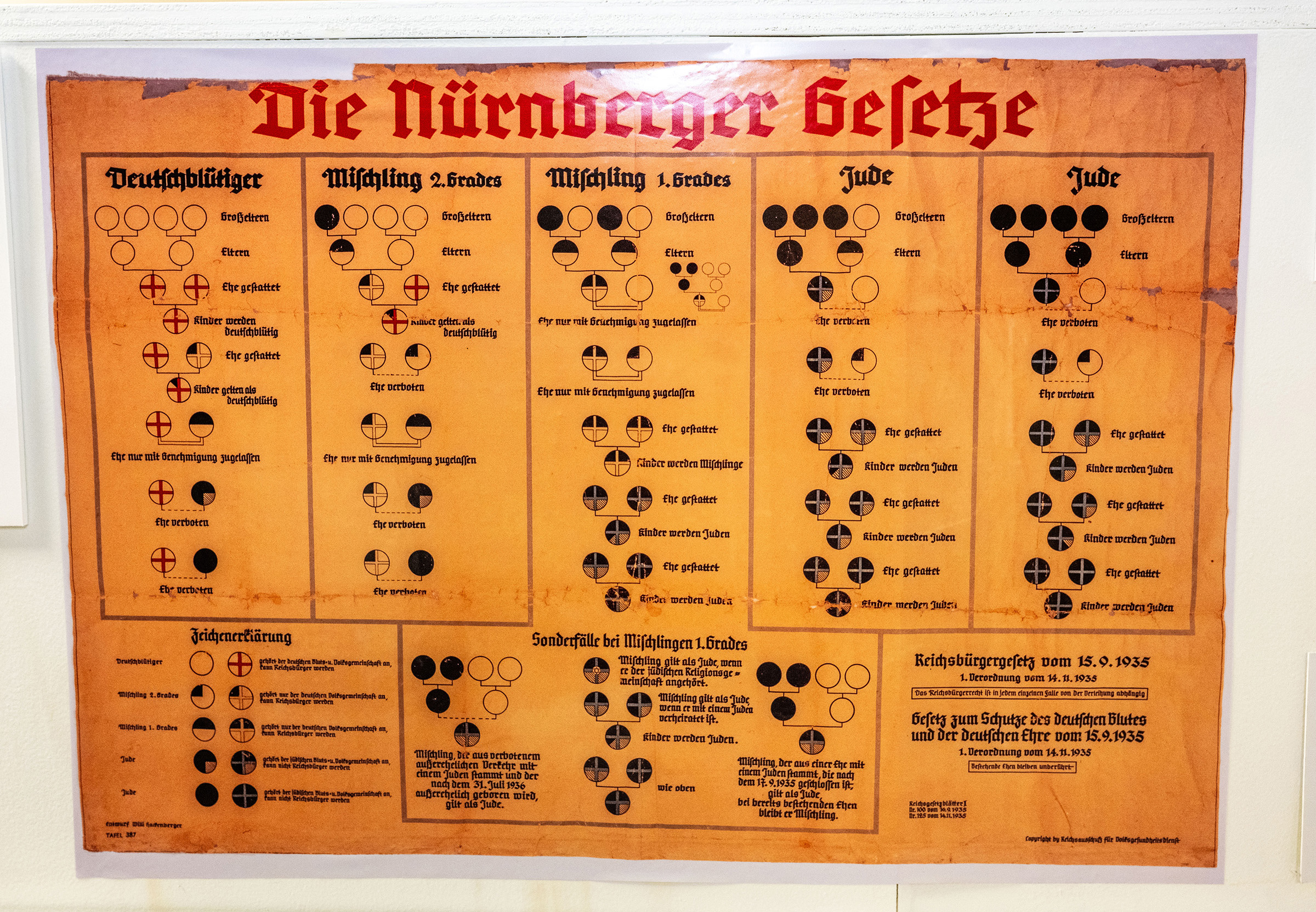
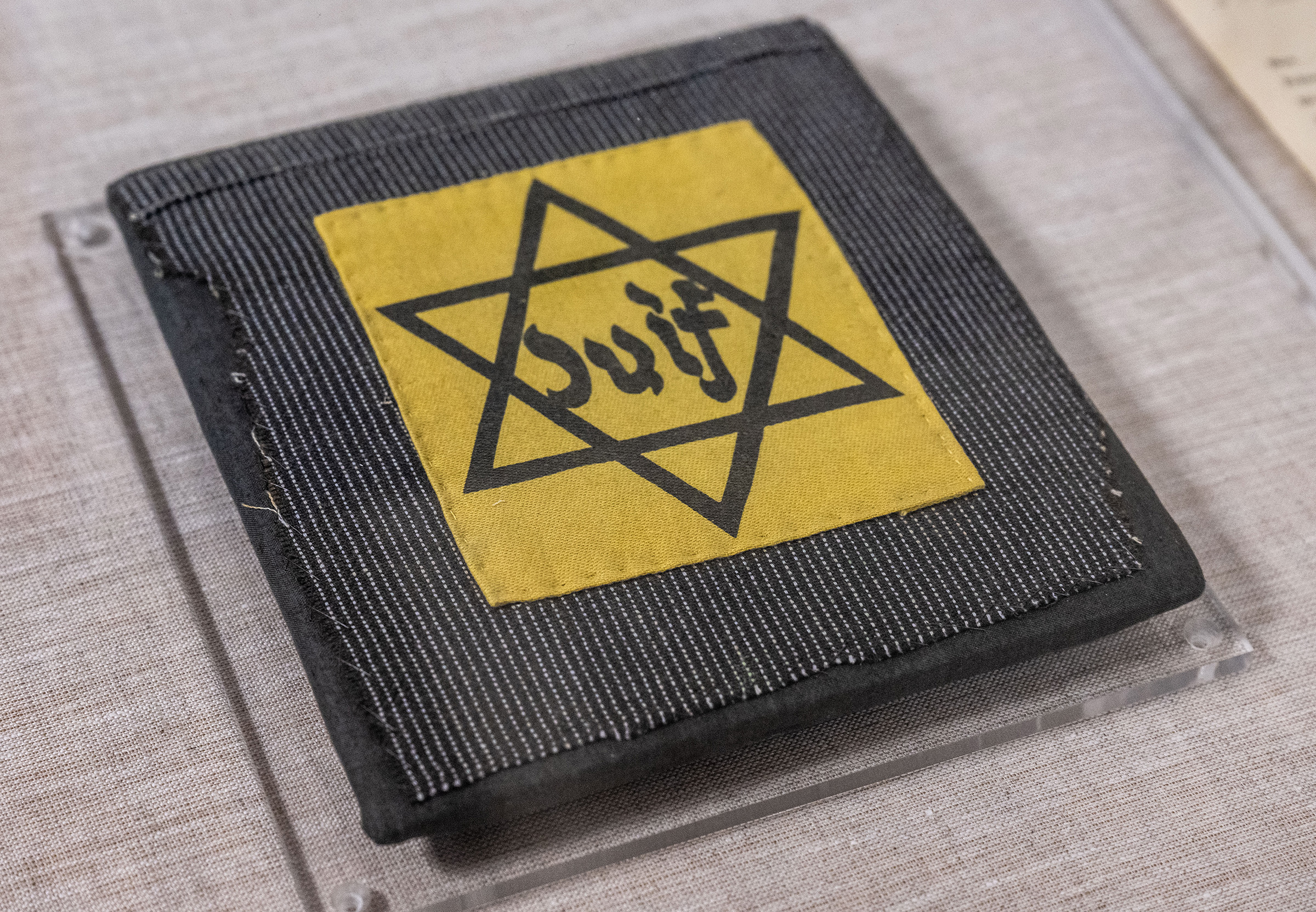
Almost immediately, Hitler suspended civil liberties and began targeting Germany’s Jews. At first, many people believed their non-Jewish neighbors would reject Hitler’s ideas. “He’s crazy. Who’s going to listen to him?” Sarah Weinroth, a former Pittsburgh resident who died in May, remembered her father saying.
Propaganda focused on “bad” Jews, not the ones people might actually know as friends and neighbors. Ottenheimer recalled a confrontation between his father and a neighbor who had joined the Nazi party.
“You know most of the Jews of Constance [a town in Germany]. Which ones are the bad Jews that we have to suffer along with?” Ottenheimer’s father asked.
“You know damned well where they are,” the neighbor shouted back. “All you have to do is pick up a newspaper or turn on your radio!”
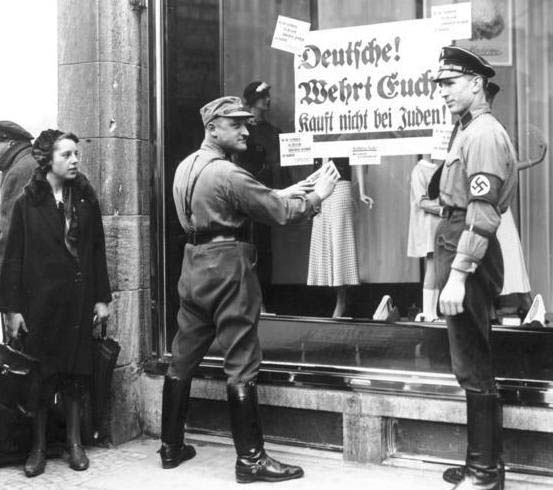
Jews were portrayed as a group that would infect the German bloodline and that was bent on world domination, manipulating stooges to achieve this aim. Between 1933 and 1939, the Nazi government passed more than 400 laws and regulations aimed at excluding Jewish citizens from German life, according to the Holocaust Encyclopedia.
After 1933, they were barred from working in any profession or job; owning any business; attending school or college; going to movies, theaters or concerts; or having sexual relations with or marrying non-Jews. They were also restricted from certain “zones,” barred from parks and other public spaces and given a curfew.
Walking through Augsburg, Germany, Walter Jacob, 7 years old in 1937, would be attacked by other children, who called him “dirty Jew.” If the attacker was alone, he fought back.
If not, “I usually chose to run,” he said in his biography, “The Seventeenth Generation,” by Eric Lidji. “Seemed safer.”
Mr. Jacob, 94, is rabbi emeritus at Rodef Shalom Congregation in Shadyside.
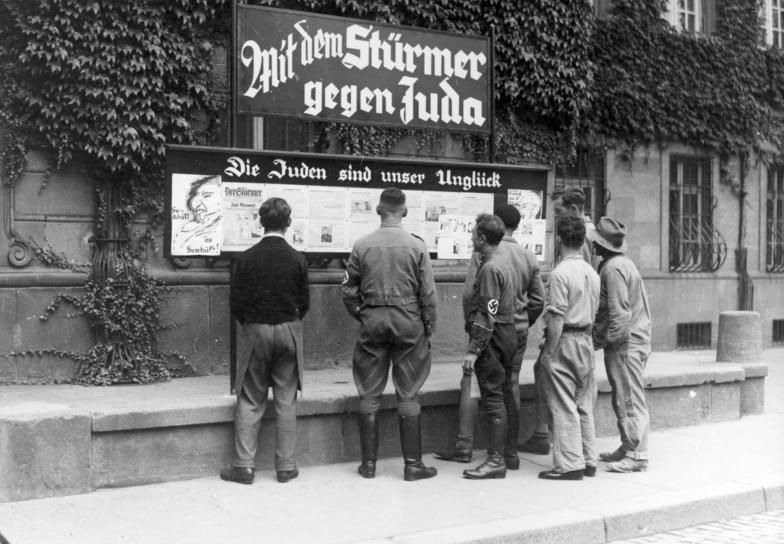
Ottenheimer described in his autobiography how a baker who had competed with his uncle applied pressure with Nazi backing to force his uncle to sell his bakery to him for a fraction of its worth. The uncle died under the strain in September 1933.
By 1939, Jewish Germans had to carry identity cards stamped with a “J” and, for Jewish people aged 6 and older, to wear a yellow Star of David badge with the word “Jew” on it on their clothing.
On Nov. 9, 1938, the government launched nationwide attacks later called Kristallnacht (“night of broken glass”) on Jewish synagogues, institutions, shops and people — killing up to 100 immediately and causing the eventual deaths and suicides of hundreds more, numerous rapes, and the temporary deportation of about 27,000 people to camps.
Herbert Silberman, a butcher who later immigrated to Pittsburgh and who died in 2000, described how Nazis destroyed his meat market in Altena, Germany. As recounted in the book “Flares of Memory: Childhood Stories Written by Holocaust Survivors,” he left the scene after sunset and caught a train to his uncle’s parents’ house, but found the windows dark and everything inside destroyed.
Fires lit the sky and smoke filled the air. He took the train to his grandparents’ house and found the front door and all the furniture broken, the beds and pillows slashed, and the windows smashed. His grandparents were in the hospital. Three days later, the Nazis arrested him, sending him to the Dachau concentration camp.
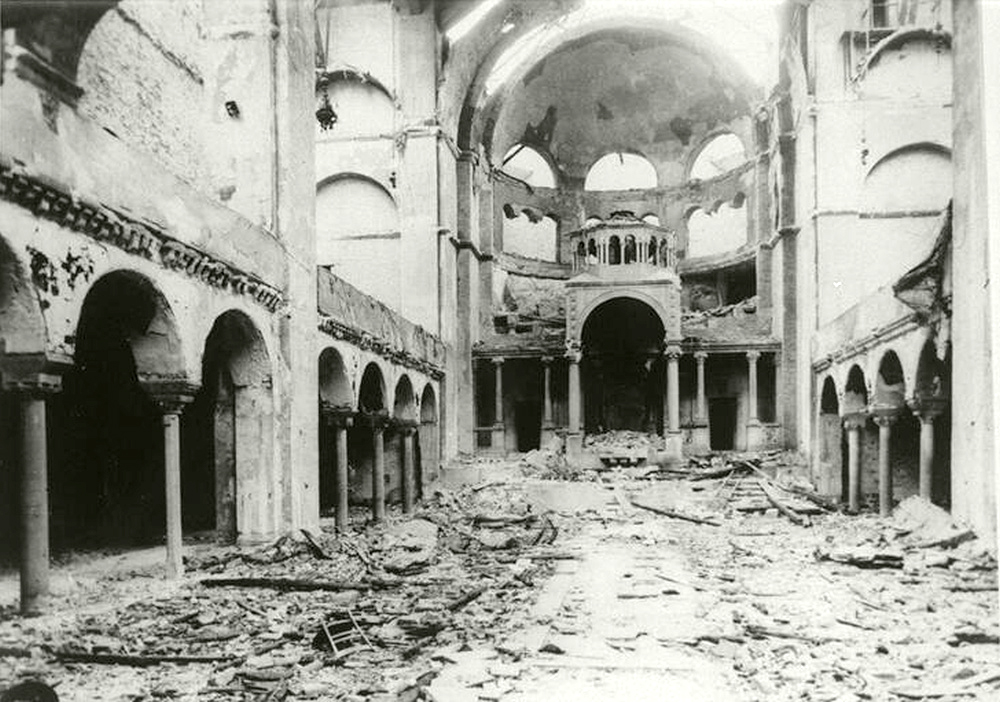
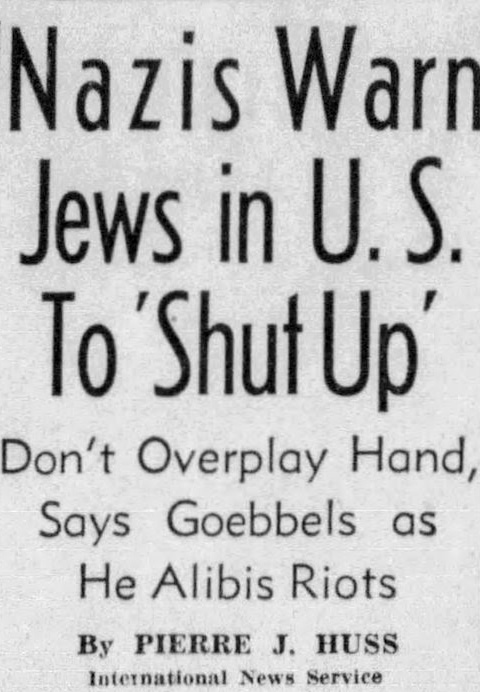
Marga Randall, then living in Schermbeck, Germany, remembered how the Nazis in addition to destroying her family’s tile stove and all their furniture also smashed her grandfather’s canary cage and trampled the bird to death. “It’s time to leave,” her grandfather told the family, as written in “Flares of Memory.” “We’re not wanted here any more.”
She lived for many years in Squirrel Hill before dying at age 75 in 2005.
Nazis poured gasoline on the pews of Rabbi Jacob’s father’s Augsburg synagogue, then set it on fire. They accused his father of setting the fire and “advised” him to throw himself out a third-floor window, Rabbi Jacob recounted in his biography. When his father refused, they sent him to the Dachau work camp. After his release the next month, the family was able to move to the U.S.
The Nazis wanted German Jews to emigrate — after having nearly all their possessions confiscated — but few other countries welcomed them. Of Germany’s 500,000 to 565,000 Jews, the United States admitted about 100,000 during the 1930s, according to the Zekelman Holocaust Center in Farmington Hills, Mich.
“Leaving Germany would seem to have been an easy matter,” Ottenheimer wrote. “After all, Hitler wanted to get us out. The problem was to find a country that would let us get in.”
Marianne Silberman’s family did manage to get out, with a stopover in England on the way to America. But even that process was fraught.
Her father had put extra money in his pocket so he could buy her brother clothes once they arrived in Bremen to catch their ship. But her brother was late, and the shopping never took place. At German customs, Nazis found the extra money.
“Without another word, they grabbed him and took him away,” Silberman wrote. “My mother screamed and started to sob and, of course, I cried, too. … When he finally reappeared, he was pale and visibly shaken.” The family ran on board the ship.
Silberman, who lived in Squirrel Hill for years and later moved to Scottsdale, Ariz., died in 2021 at age 91.
Warning: Descriptions of atrocities follow.
When Germany invaded Poland in 1939, about 3.5 million Eastern European Jews fell under Nazi control. These were rounded up and forced into crowded, unsanitary ghettos without fuel for heat.
Squirrel Hill resident Melvin Goldman, who died in 2008, recounted in his biography, “Perseverance: One Holocaust Survivor’s Journey from Poland to America,” co-authored with his daughter Lee Goldman Kikel, that food rations in the Lodz Ghetto in Poland slid to no more than 300 calories a day per person. People became so weak, he said, they had to use their hands to lift their feet up stairs.
Tens of thousands were squeezed into tiny spaces. The Lodz ghetto, when it began in 1940, had 150,000 Jewish people living in 1.5 square miles, according to the Holocaust Encyclopedia.
Tokyo, the world’s most populous city today, has a population density of 16,121.8 people per square mile, according to the independent nonprofit WorldPopulationReview.
Beginning in 1941, the Nazi government began a policy of mass killing.
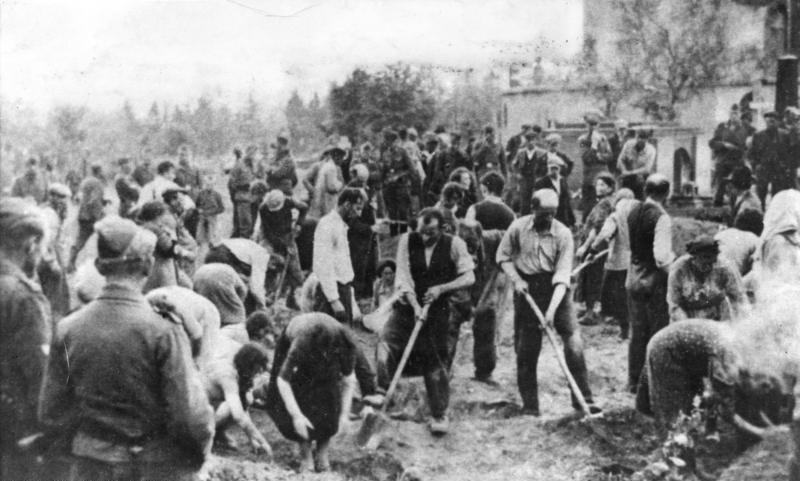
“The instigator, supporter and leader of this war is, and will remain, the international Jew [sic], that criminal race which now, as in centuries past, is to blame for the fact that the nations of the earth are arrayed against one another in war,” stated a release from the Nazi press office on Feb. 14, 1944, as quoted in “The Jewish Enemy: Nazi Propaganda During World War II and the Holocaust” by Jeffrey Herf.
“An understanding among the peoples of the earth can be hoped for only when this world pest is once and for all wiped out.”
One Vienna police officer who participated in a 1941 mass murder of Ukrainian Jews wrote to his wife, “I aimed calmly and shot with confidence at the women, children and numerous babies, aware that I have two babies of my own at home, and these hordes would treat them just the same, or even ten times worse perhaps.”
Pittsburgh survivor Moshe Baran — who died Feb. 3 at age 103 — was 21 when the Nazis forced him and other able-bodied men into a ghetto in Krasne, Poland.
Understanding that staying there meant certain death, he and two friends smuggled discarded Soviet gun parts out of their workplace and reassembled the parts back at the ghetto. One night the friends dug a space under barbed wire surrounding the ghetto and fled into the woods.
There, he and his friends joined partisans fighting the Nazis. Not long afterward, Nazis rounded up the Jews in the Krasne ghetto, took them to a barn and shot them to death, which took all day. Then they burned down the barn.
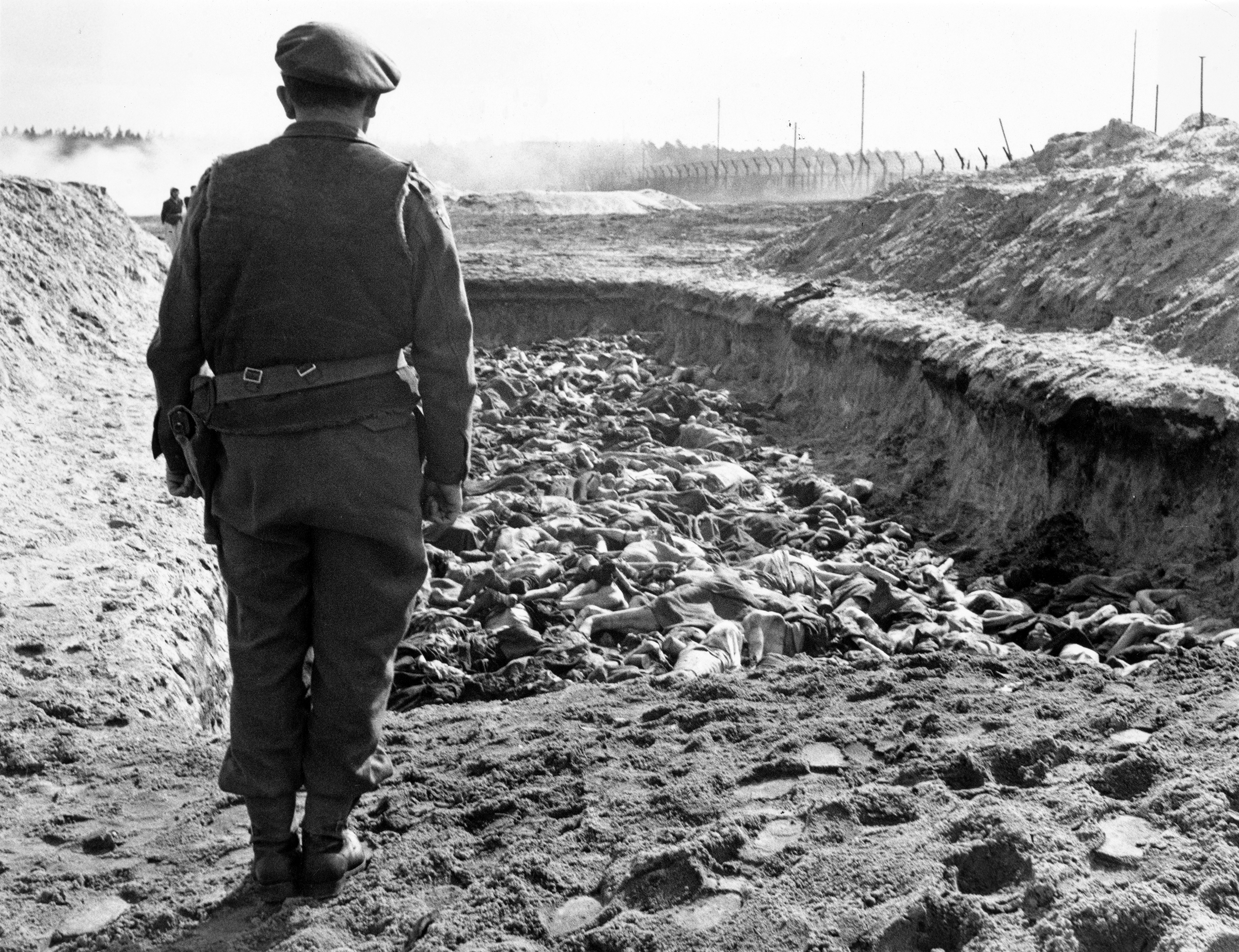
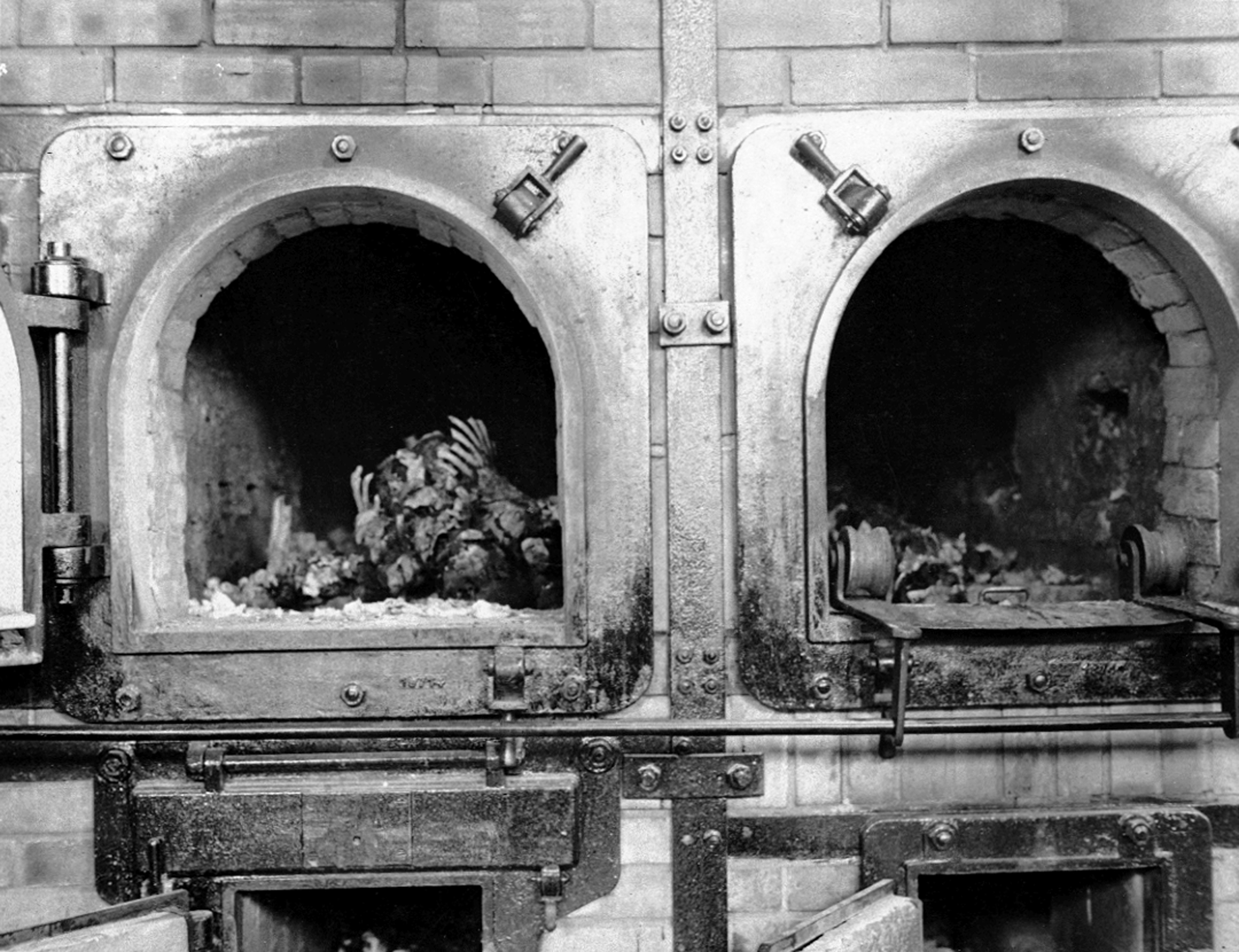
Many people were packed into railroad cattle cars with room only to stand, no food or water and a single bucket to serve as bathroom facilities for 50 to 100 people. They were then sent on multiday journeys to camps. Most were killed on arrival. A few were sent to forced labor.
Camp guards regularly beat, tortured and randomly killed prisoners. People also died of malnutrition, starvation, disease and exposure. When prisoners became too sick or weak to work, they were killed.
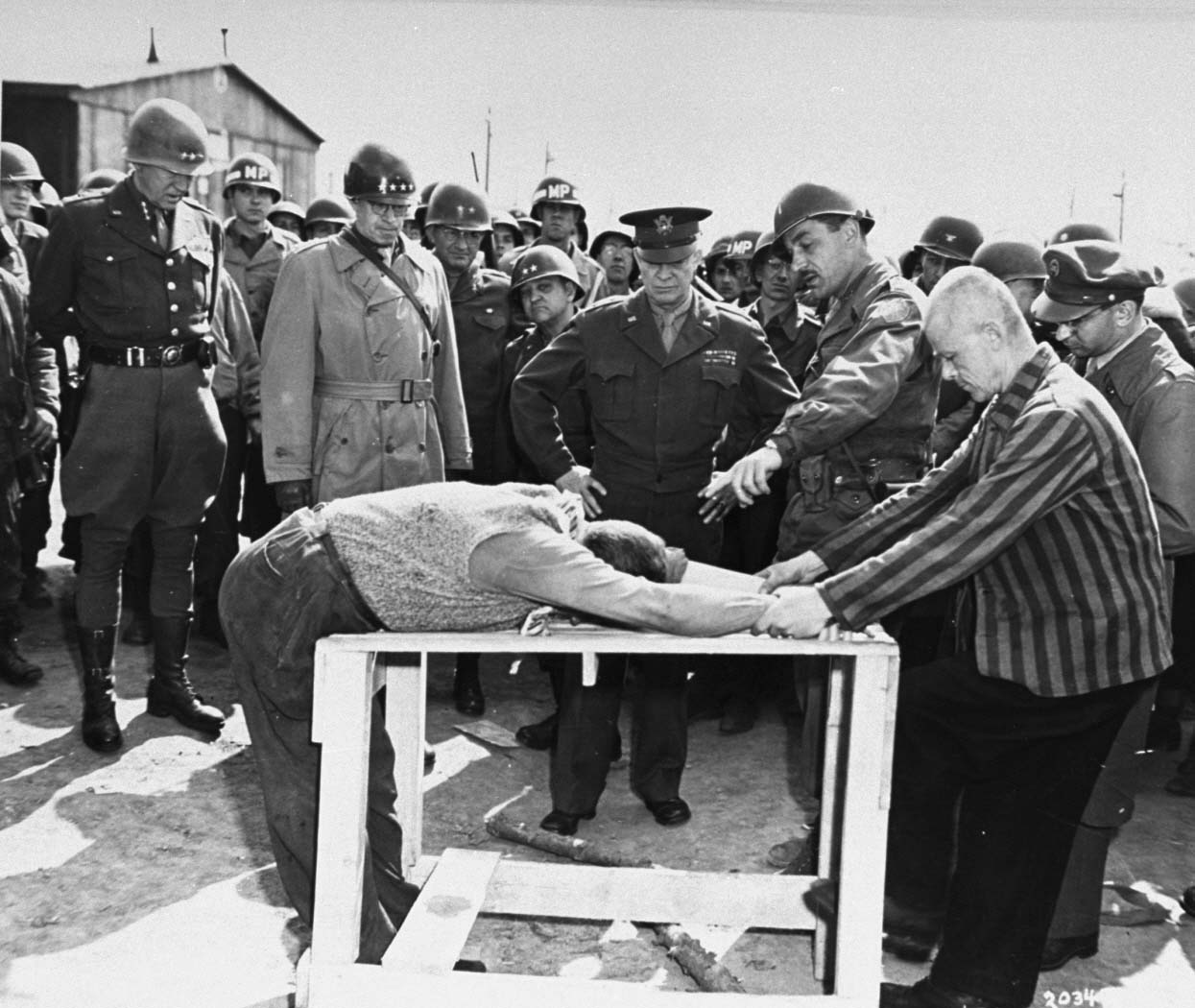
Oscar Singer, from an observant family in the Galitzia region of Poland, was forced to clear roads and forests, help make Nazi airplanes and tanks and later, extract gold teeth from dead prisoners — all while guards screamed obscenities and beat him with rubber hoses or whips. The penalty for not complying was death.
“He always hoped … he’d see his parents again,” said his daughter Lee Fischbach of Squirrel Hill at a 2023 presentation at the Pittsburgh Holocaust Center.
“So he did what they said to do. And some people who are maybe in the audience would feel, ‘Well, I would never do that.’ … One of the things many of the survivors have is that word ‘survive.’ They wanted to survive.”
The Nazis killed all of Singer’s family except one cousin.
In December 1941, the Nazi government opened the first extermination-only camps in German-occupied Poland and Belarus. Once prisoners arrived — at Treblinka, Sobibor, Chelmno, Belzec and sections of Auschwitz-Birkenau and Majdanek — most were stripped and murdered within hours.
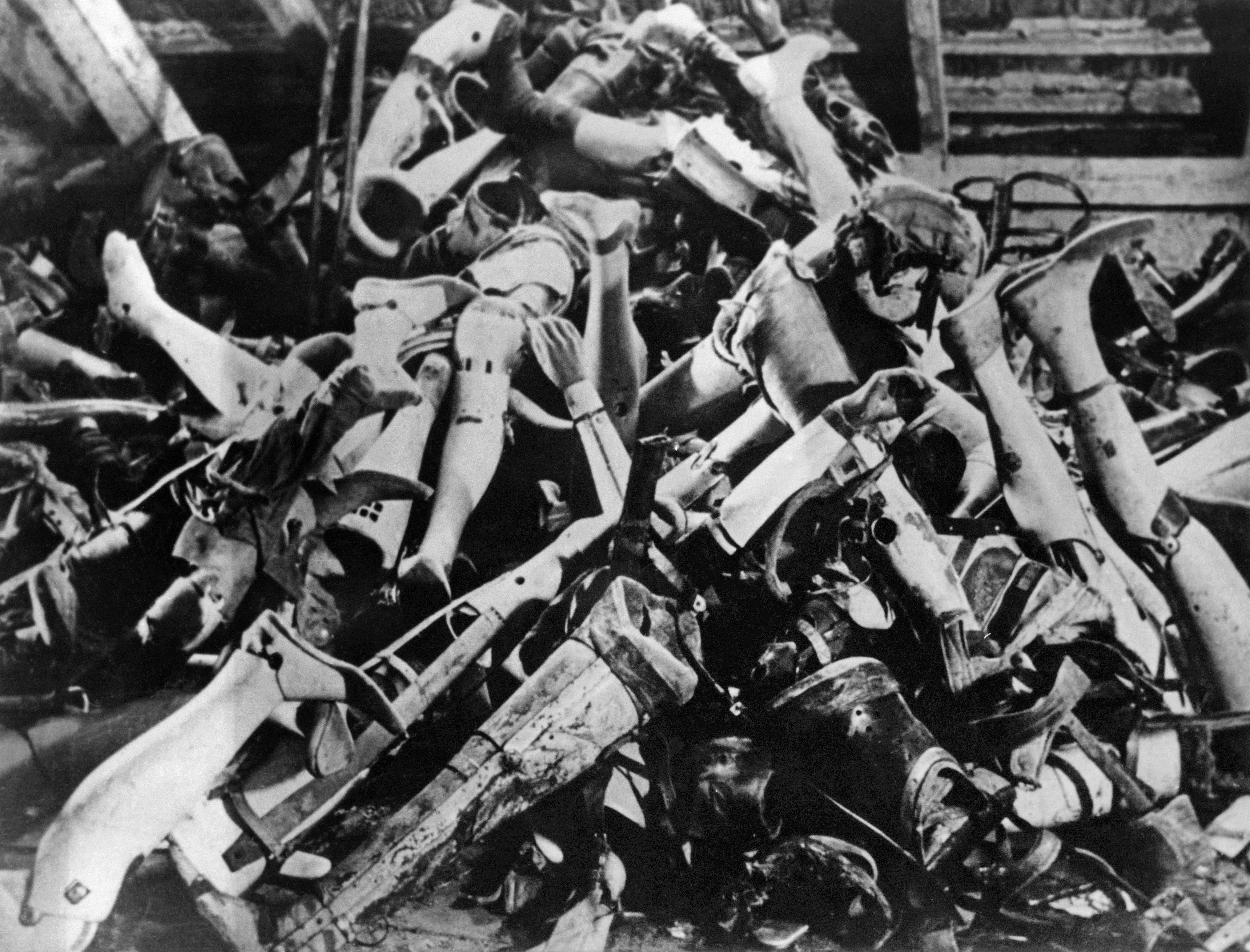
One Holocaust survivor, Ignace “Iggy” Weinroth, formerly of Squirrel Hill, who died in 2001 at age 77, avoided being deported from a work camp infirmary to a death camp. He asked a guard if he could put on his shoes, Weinroth recounted in a 1996 oral history video. The guard refused, saying that Weinroth was going to his death and wouldn’t need shoes.
When Weinroth persisted, saying, “But I am alive and I want to get the shoes, I am cold,” the guard kicked him and allowed him to get his shoes. Instead, he hid between two bunks and the truck left because the guard had already indicated on a list that Weinroth was on the truck. After that, he assumed a different name so he could continue to receive a bread ration.
At work camps, Weinroth unloaded coal — his four-man team was given three hours to unload 20 tons of coal from each train car — dug trenches and worked other physical jobs while living on one-twelfth of a 2-kilogram loaf of bread, about the equivalent of five or six slices of bread, a day. He estimated he weighed 70 pounds at the end of the war.
Goldman in his biography remembered that on arriving at the Birkenau camp, guards chased him and other prisoners, beating them with sticks, until they arrived at their block. Then kapos — captives whom the Nazis put in charge — lined up along opposing sides of the room and whipped the new prisoners all through their first night, pushing them from one side of the room to the other.
With no shoes or coat and forced to walk to a factory to work every day in winter, Goldman’s toes got frostbitten. Someone at a medical treatment center cut off the frozen parts. He lost six teeth in beatings and others were broken; the Nazis pulled out his two gold teeth.
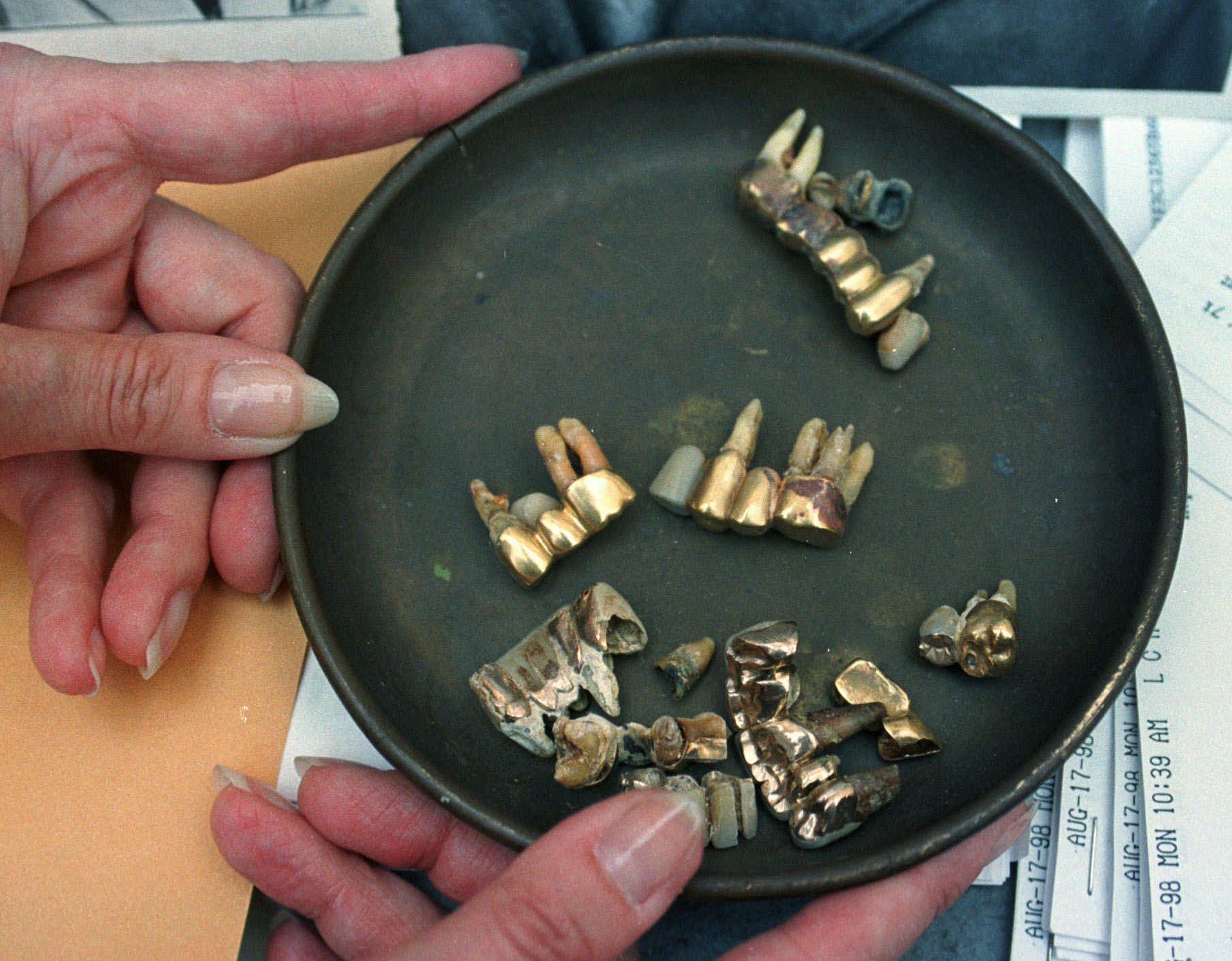
By 1945, the Squirrel Hill resident said in his book, “We were so used to the clubbing that some of us would even run out for a little piece of cigarette or something that the guards threw away, … or if we saw in the road any kind of peelings of a potato or something like that. … We were not afraid of being beaten or shot any more. We were like animals, used to beatings. You cannot describe.”
Scientists at some Nazi camps had free rein to experiment on the prisoners. These experiments — performed without anesthesia — included testing various methods of sterilization, trying to change eye color and determining the limits of human endurance to cold and high altitudes.
Esther Haas of Squirrel Hill, who died in 2008 at age 89, was an experiment subject.
In the 1998 book “Flares of Memory,” she remembered the girls in her barrack returning bleeding from the operating tables. She never learned what experiments were performed on her and the other girls, but her only child died in infancy of birth defects and she was unable to have more children, leading to speculation that the Nazis had been testing sterilization methods.
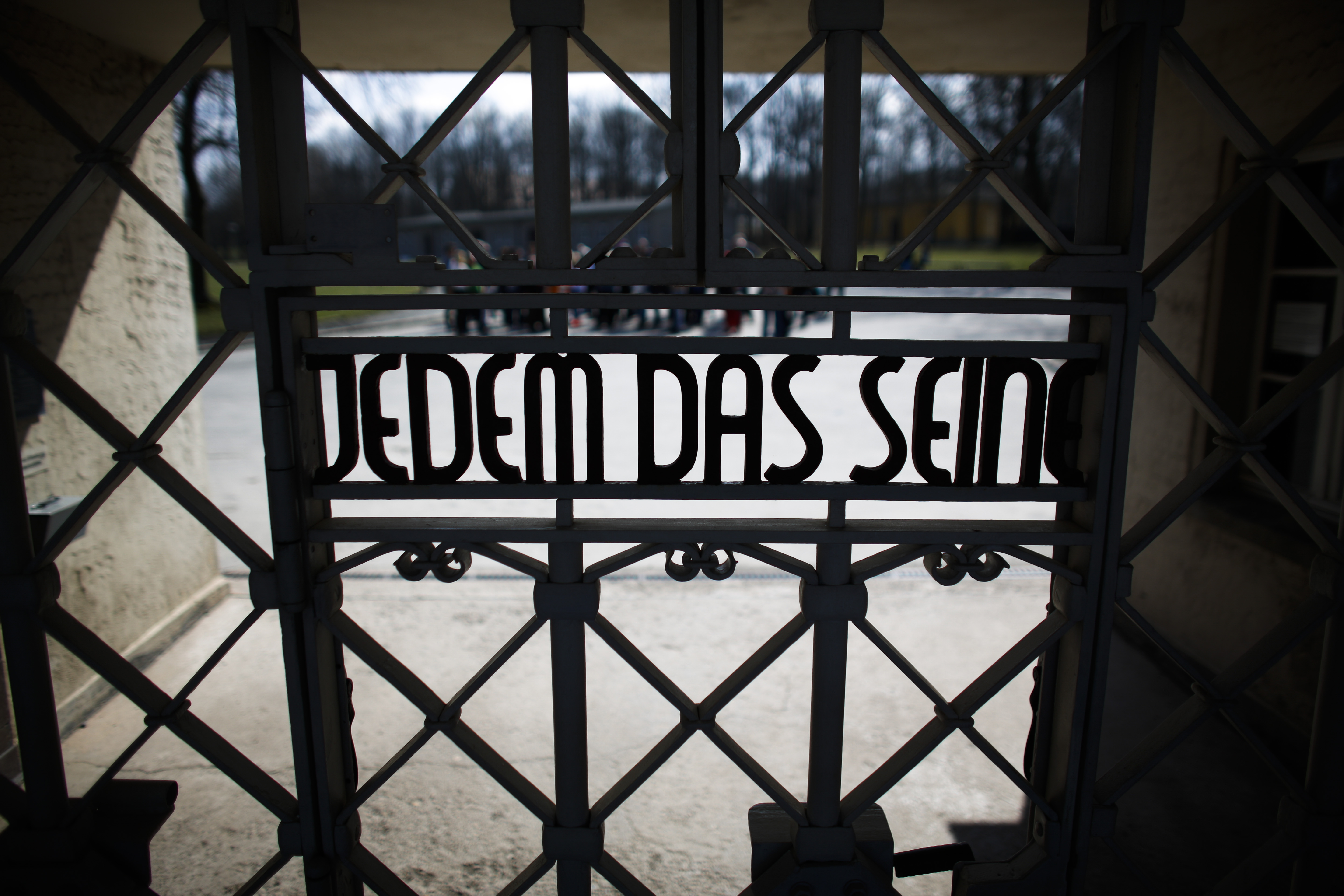
The Nazis also targeted other groups: Slavs such as Poles and Russians; any men accused of having sex with other men (lesbians were not persecuted for their sexuality); Black and biracial people; nomadic Roma and Sinti people, sometimes known as “Gypsies”; Communists; socialists; trade union members; criminals; people with mental disabilities like Down syndrome, mental illnesses like schizophrenia or physical disabilities such as epilepsy and cerebral palsy; anyone who resisted Nazism; and Jehovah’s Witnesses, who refused to serve in the military.
Only Jewish and nomadic Roma people were earmarked for extermination.
After World War II, the European Jews who had survived faced still more hardship.
Most had lost many if not all family members. Those who returned to their pre-war homes found former neighbors hostile and their houses uninhabitable or occupied. Deadly anti-Jewish riots continued in Poland.
Many countries, including those in Europe and the United States, continued to bar or greatly limit Jewish immigration.
Click images to learn more.
The historic Jewish homeland, then called Mandatory Palestine, was under British control with a majority-Arab population. Jews had lived there continuously but as a minority since the Roman Empire crushed the ancient state of Judea between the years 66 and 136. Over centuries, many empires and armies conquered the region. Through the late 1920s and early 1930s, Jewish immigration to the area increased, met with sometimes violent Arab opposition and tighter British restrictions against Jewish immigration.
A different chapter in history began as international consensus built for a modern Jewish state in British Palestine. Israel was founded May 14, 1948, immediately after the British Mandate ended; the next day, armies from the neighboring Arab states invaded. Conflict between Israel and Palestinian Arabs who fled or were displaced during that war continues to this day.
About 140,000 Holocaust survivors moved to Israel after the state was established, according to My Jewish Learning, a leading website for Jewish education.
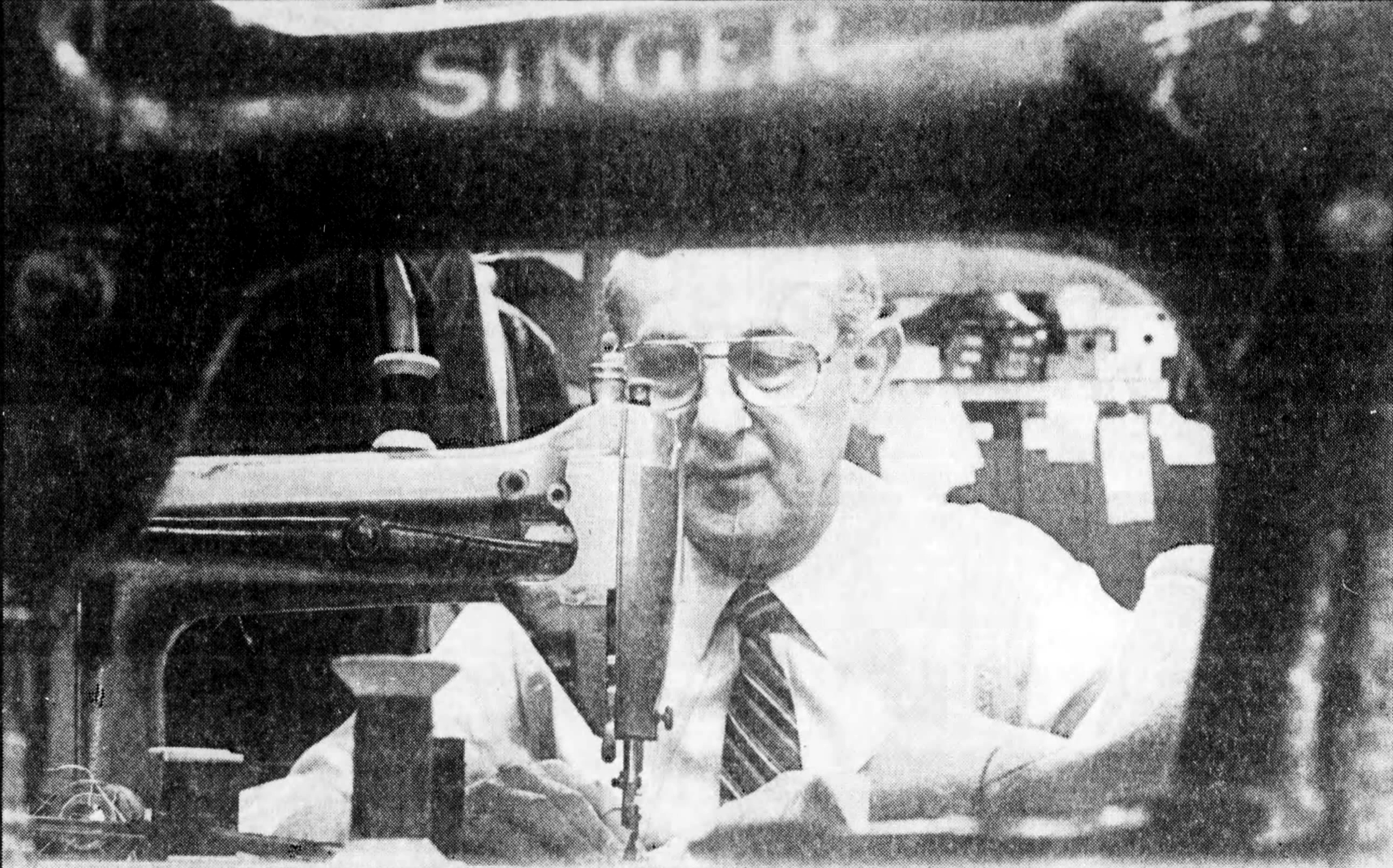
The U.S. marked another main destination for Holocaust survivors after new laws opened the door to Jewish immigration. Cities such as Pittsburgh became havens for many who wanted to start fresh, have families and build businesses.
After the war, Sarah Weinroth, who grew up in Belgium and whose parents sent her to hide in a Catholic convent, married her husband, Ignace, a concentration camp survivor. In 1955, they moved to Pittsburgh.
“Why in Pittsburgh?” Weinroth said in a 1996 oral history video with the University of Southern California Shoah Foundation. “Because my mother had an adoptive brother there.”
The couple would have a daughter and a son, and her parents eventually joined the family in Pittsburgh. The couple’s son, Joseph, is now a semiretired lawyer and former Pittsburgh mayoral candidate.
After moving to Pittsburgh, the Weinroths opened a dry-cleaning business, Eastmont Cleaners, first in Eastmont then in Monroeville, where Sarah Weinroth’s father worked as a tailor.
Sarah Weinroth, who later moved to New York, died in May.
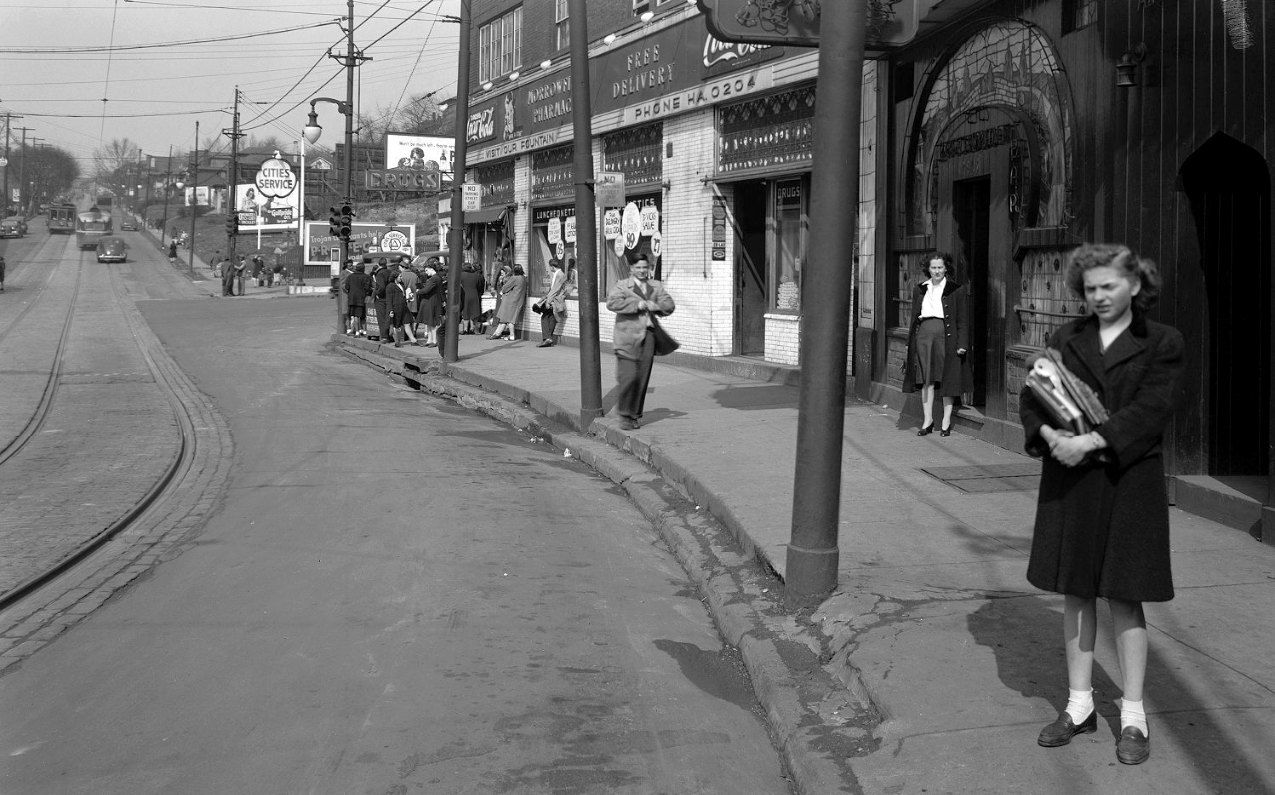
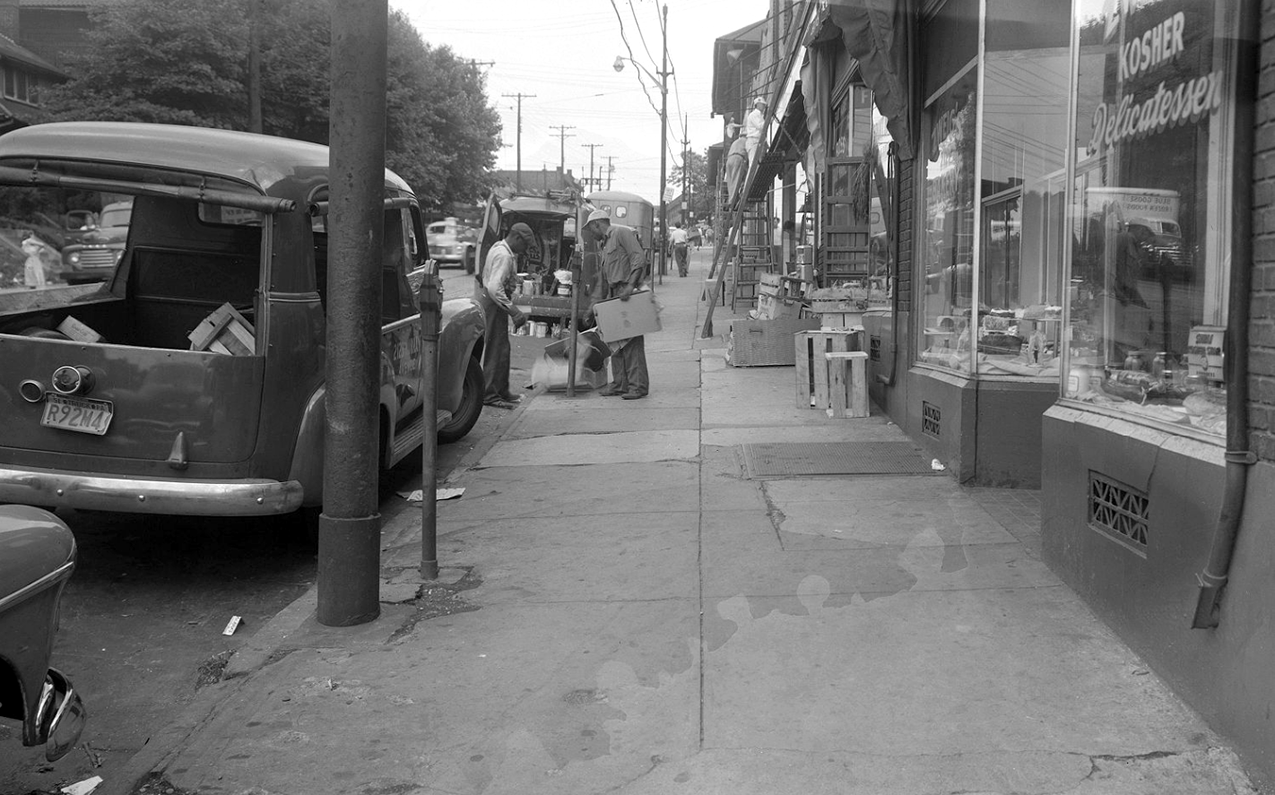
As the last Holocaust survivors pass away, research indicates that awareness of what happened during those turbulent times has faded. A 2020 study by the nonprofit Conference on Jewish Material Claims Against Germany (Claims Conference) surveyed U.S. residents born after 1980. About a third of those surveyed thought that 2 million or fewer died and 11% blamed the Jews for their own murders.
“Antisemitism didn’t just begin in 1932 [when the Nazis became the largest political party in Germany] and end in 1945,” said the Holocaust Center of Pittsburgh’s Ms. Loeb. German Jews “were totally indistinguishable from anyone else … until all of a sudden, they weren’t.”
For those who lived through the Holocaust, forgetting what happened wasn’t an option. Sarah Weinroth said in her oral history that she could push away the past while she was working and raising children. In retirement, the memories came in her dreams.
“It’s a ghost behind you. It’s a shadow,” she said. “It does not go away. It can destroy you.”
Laura Malt Schneiderman, lschneiderman@post-gazette.com.
Oct. 15, 2024: An addition was made to a quote from Emily Loeb of the Holocaust Center of Pittsburgh to clarify the significance of the year 1932.
Correction, posted Nov. 27, 2024: This story incorrectly described the circumstances in which Oscar Singer was made to extract gold dental work from prisoners. He was forced to do so after prisoners were murdered in front of him.
Laura Malt Schneiderman
Ed Yozwick
Advertisement
Advertisement